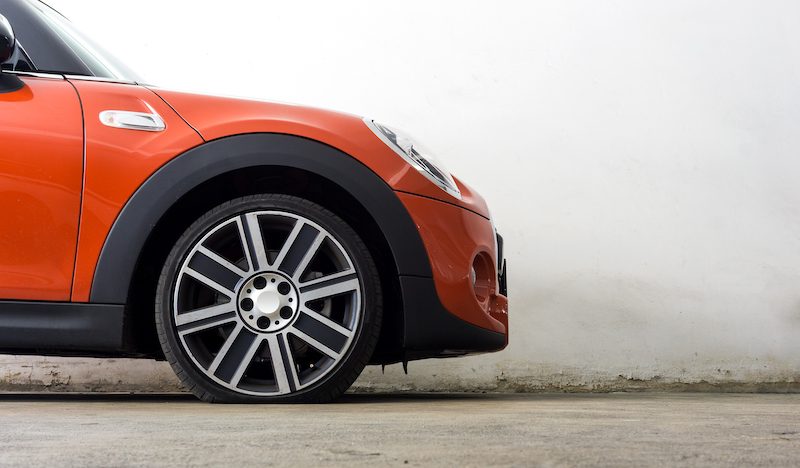What To Do If You Have a Flat Tyre

It’s dangerous to drive with a flat tyre. It can affect your steering, your cornering, and your braking distance. So if you have a flat tyre, you must stop driving and get it repaired or replaced as soon as you can.
Regularly check your tyres for signs of wear and tear, and replace any tyres that appear worn or damaged. This will help you avoid a flat tyre when you’re on the road.
How Do I Know If I Have a Flat Tyre?
Driving over a pothole or a sharp object can puncture your tyres, and in this case it will be obvious that you have a flat tyre. You’ll hear a lot of noise from the road surface, and your steering wheel may vibrate.
But not all flat tyres occur so suddenly. Damaged sidewalls, leaking valves or a nail in the tyre can sometimes cause tyres to slowly deflate over time, so you may not notice your flat tyre immediately.
So here are some signs to look out for:
Deformed or deflated looking tyres as your car’s parked.
Your car does not sit evenly on level surfaces.
Increased noise when you take corners.
Heavy steering, or a constant pull in one direction.
What To Do If You Have a Flat Tyre
Stop driving! If you notice you have a flat tyre or experience a flat tyre while driving, pull over as soon as it’s safe to do so.
Repair or replace the tyre. You might be able to do this yourself, or you might have to call for roadside assistance.
Arrange for a more permanent replacement. Any repair or replacement you get at the roadside may be a temporary solution. Book your car into a garage as soon as possible to arrange for a permanent replacement or a repair.
What To Do Once You Realise You Have a Flat Tyre
First, stop driving! If you notice a flat tyre when you’re approaching your car, don’t do any driving until you can get it fixed. If you get a puncture when you’re on the road, pull over as soon as it’s safe to do so. And again, don’t do any more driving until you can address the problem.
If you get a tyre blowout on the motorway, try and head left to the hard shoulder. Then exit your car when it’s safe to do so, and sit beyond the barrier and on the verge to safely await rescue.
Read our full guide to what to do if your car breaks down on the motorway.
How to Change a Flat Tyre
Your car may be fitted with a spare tyre, so you may be able to replace your flat tyre on the roadside if it is safe to do so. You need some specialist equipment to change a tyre, including a wheel nut, and a jack to lift your car from the road. If you don’t have these to hand, you will have to call for assistance so that a trained mechanic can change the tyre for you.
For peace of mind, you might want to do this even if you do have the means of changing the tyre yourself. If an expert mechanic changes your tyre, you can rest assured that they’ve done so as safely and securely as possible.
Bear in mind that most spare tyres aren’t intended to be permanent replacements – especially space saver tyres. They’re often designed to get you as far as a garage, so you can get a proper replacement. They may be limited to certain speeds or distances.
So even after you’ve changed your flat tyre, you may still have to book yourself into a garage to get a permanent replacement.
Repairing a Flat Tyre
Some newer car models have tyre repair kits in place of spare tyres. These kits include a sealant, and a means of applying it and securing it. Using a tyre repair kit on the roadside is a lot easier than changing a tyre on the roadside. However, tyre repair kits are only really good for repairing punctures. If you get a blowout, or if there’s any damage to your tyre’s sidewalls, then a tyre repair kit won’t be much help.
And once again, this is not a permanent fix. Once you’ve repaired a tyre, you’ll still have to get to a garage as soon as possible to get a permanent replacement or a repair.
What About Run Flat Tyres?
If you’re worried about sudden punctures or blowouts, consider getting run flat tyres for your car. These have reinforced sidewalls or stronger internal structures than standard tyres, so they’ll hold their shape even when they’re deflated following a puncture.
But run flat tyres aren’t invincible. They’ll keep you on the road if they get damaged, but you’ll still have to get a permanent replacement as soon as possible. For more information, read our full guide to run flat tyres.
Want to Avoid Flat Tyres?
Regularly check your tyres yourself for signs of damage, and arrange for a replacement or a repair as soon as you see anything cuts, bulges, or signs of degradation.
Commit to regular services for your car, so that trained mechanics can address any potential issues in advance.
Finally, add breakdown cover to your comprehensive car insurance. That way, if you do get a flat tyre while on the road, you can get the support you need as fast as possible.







